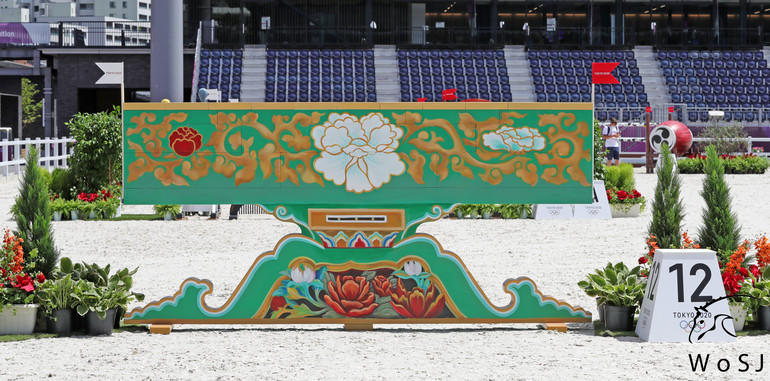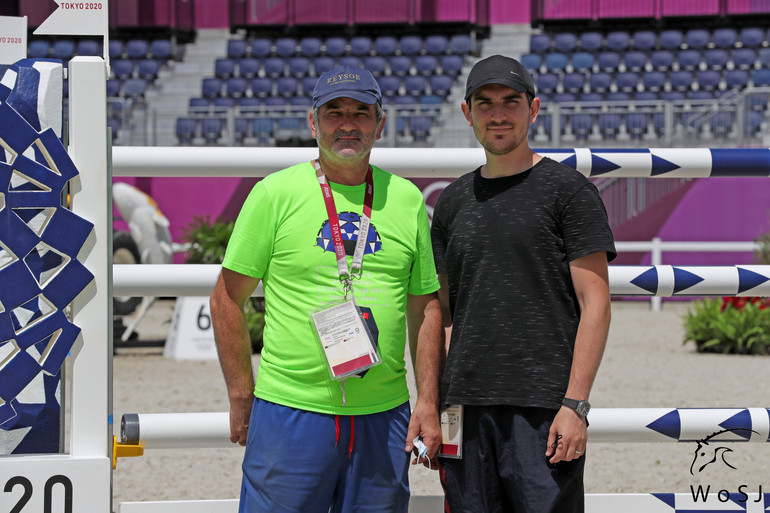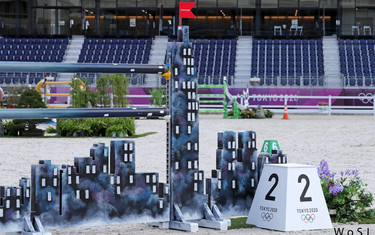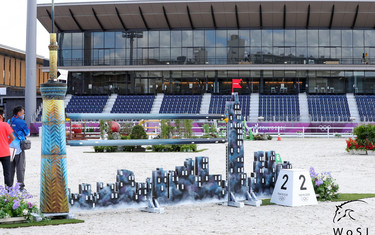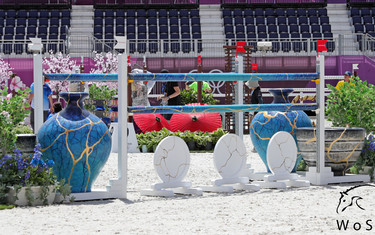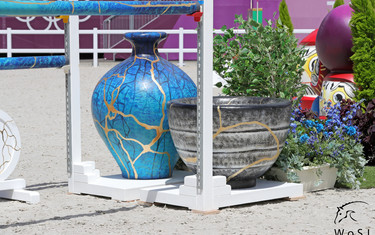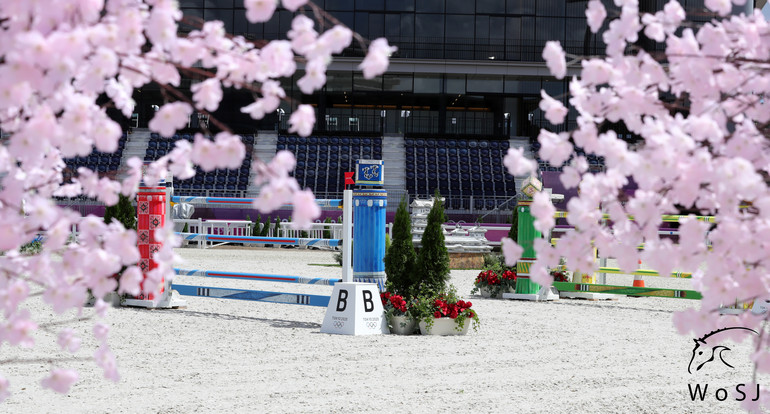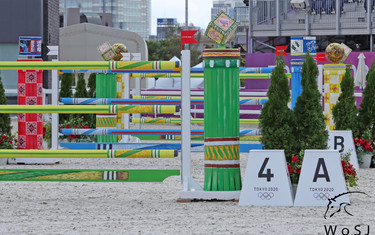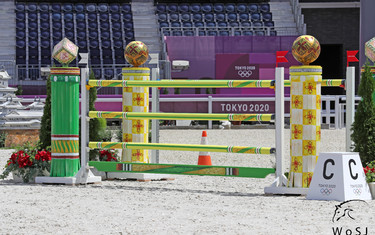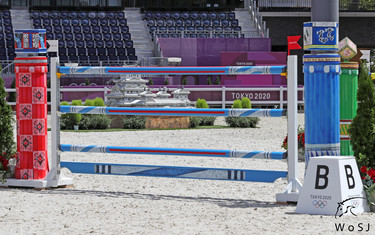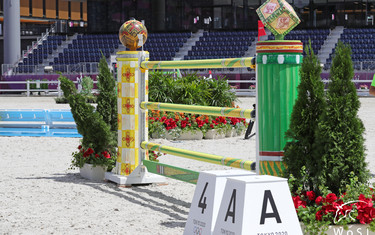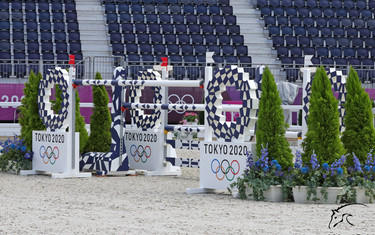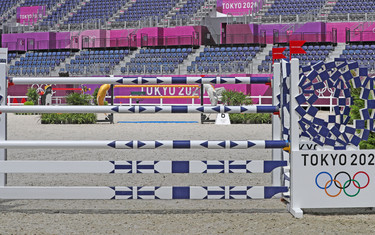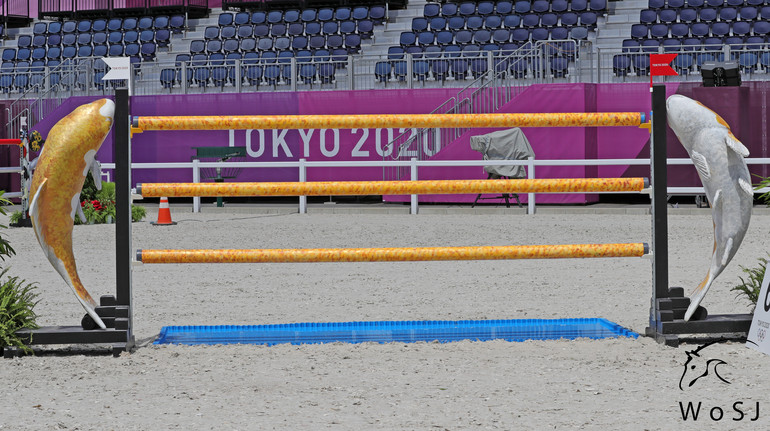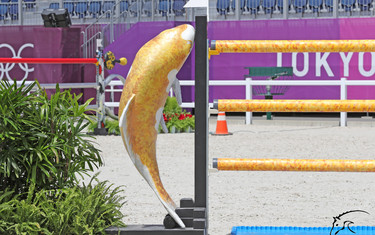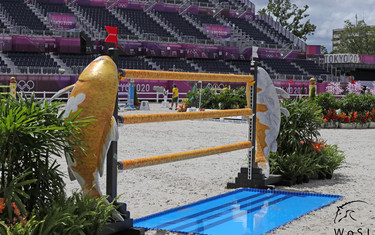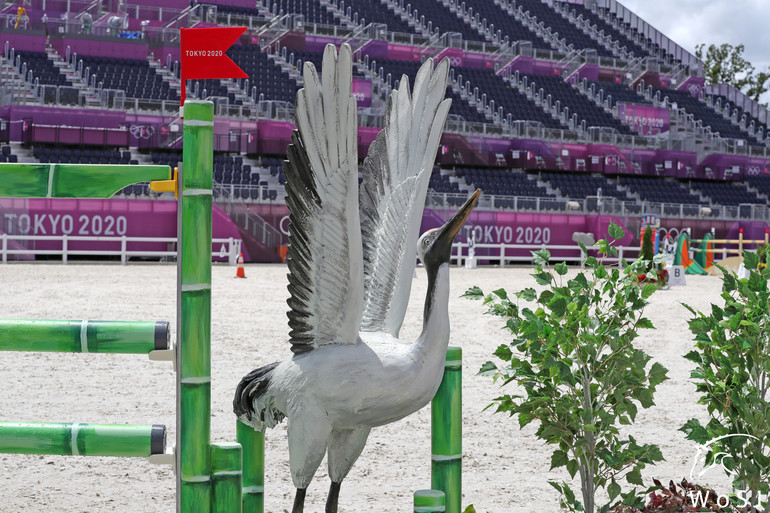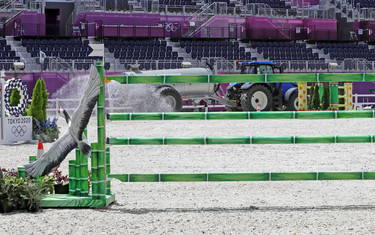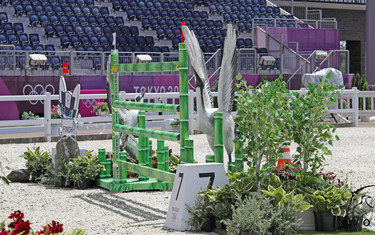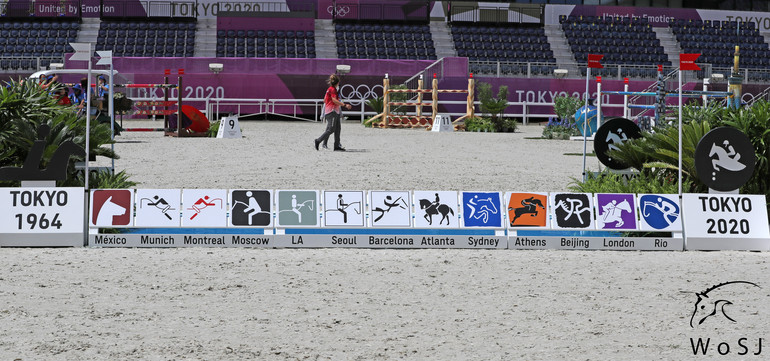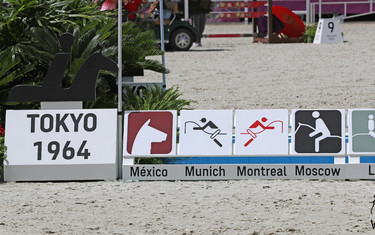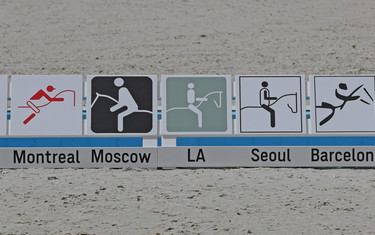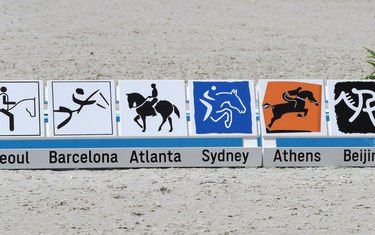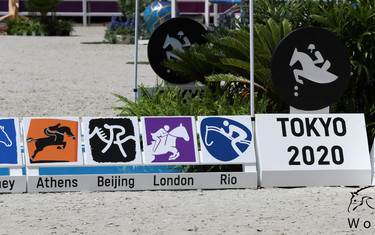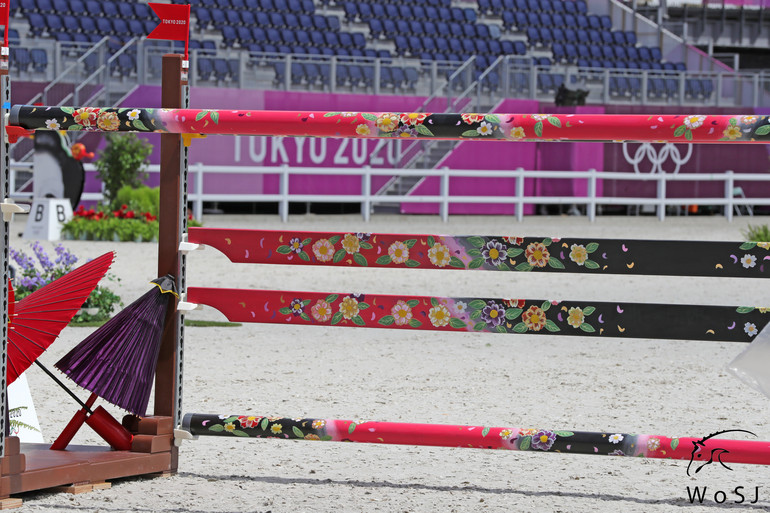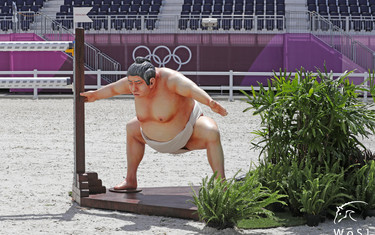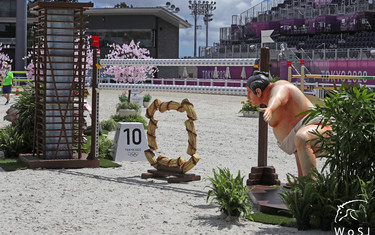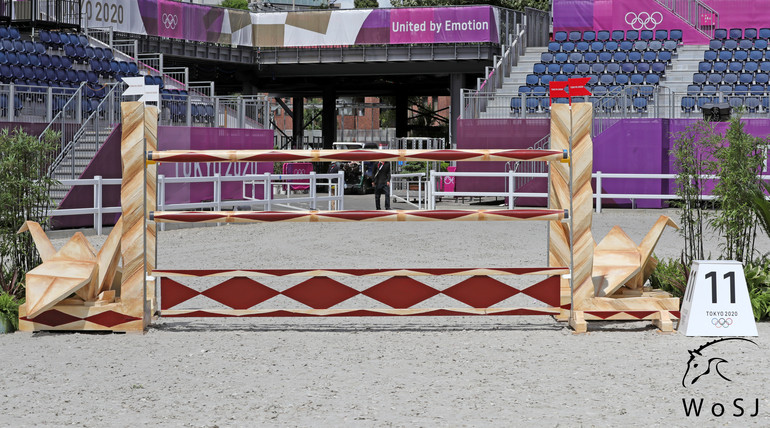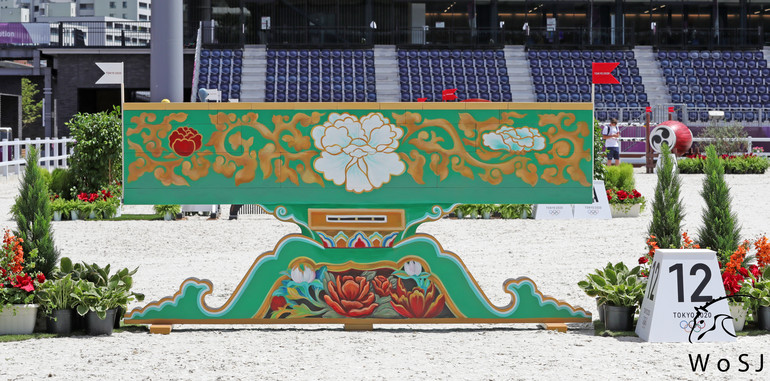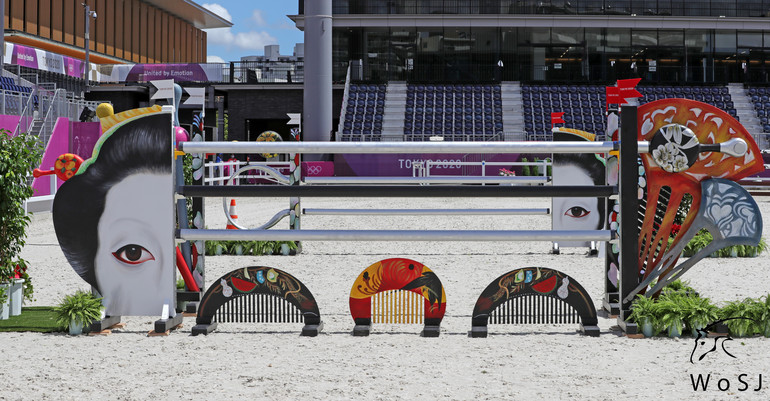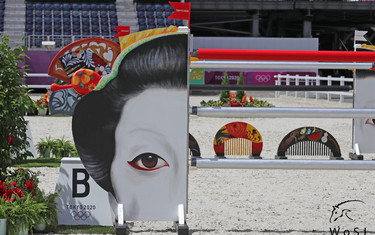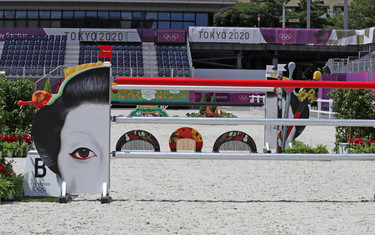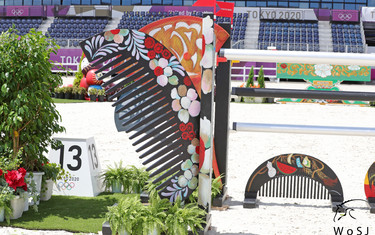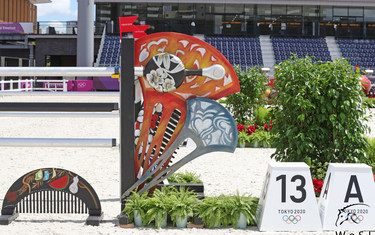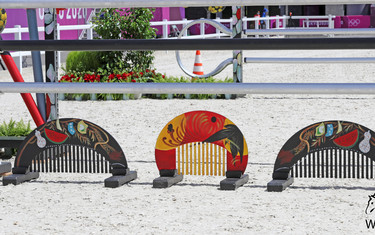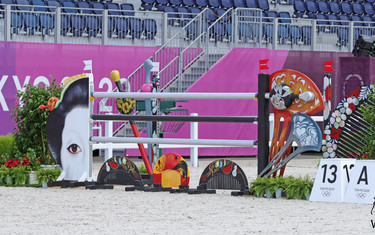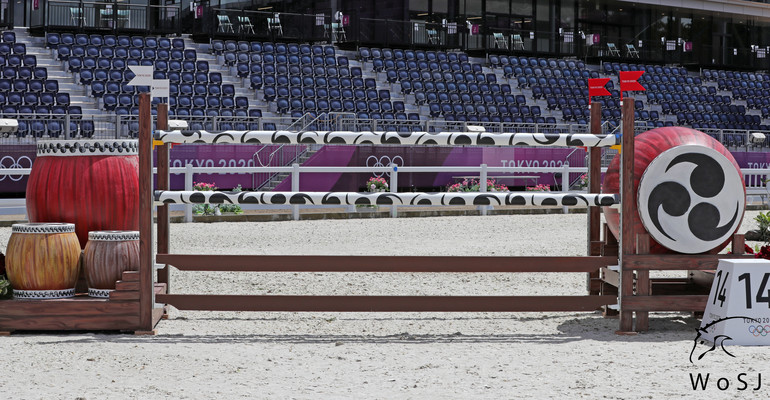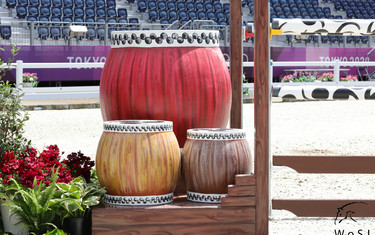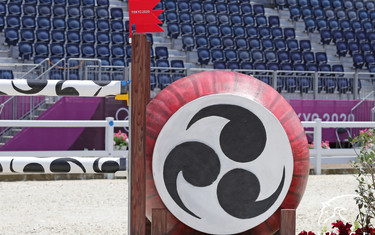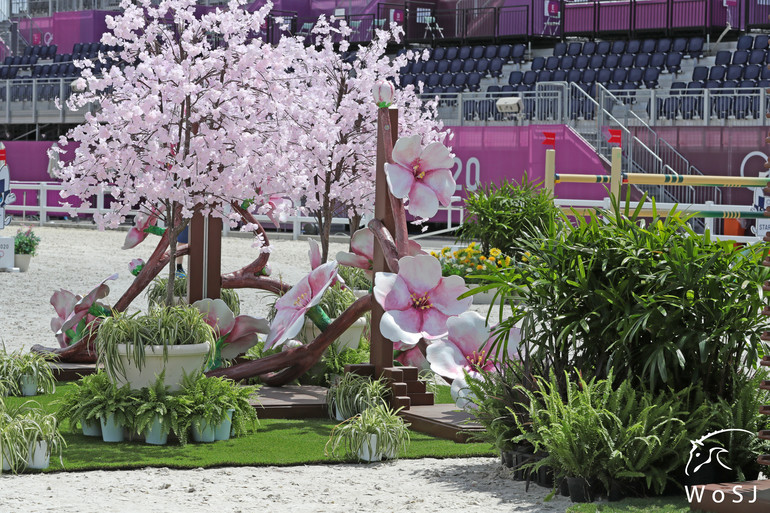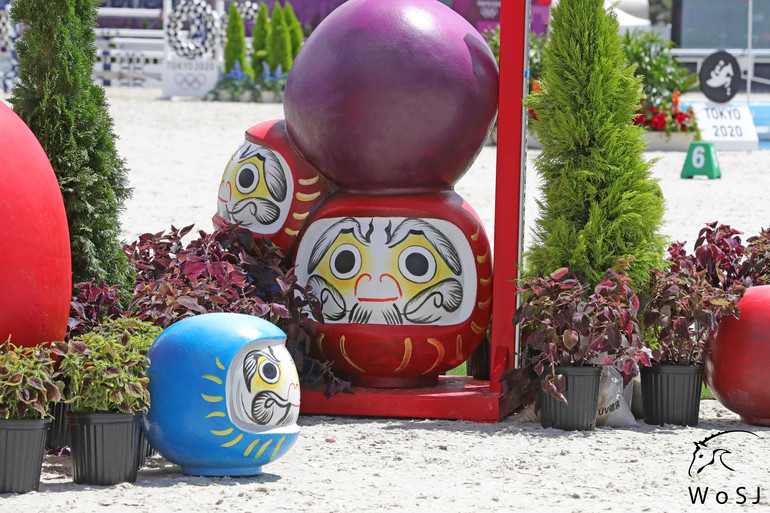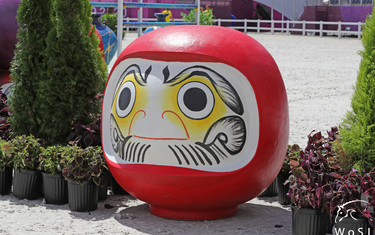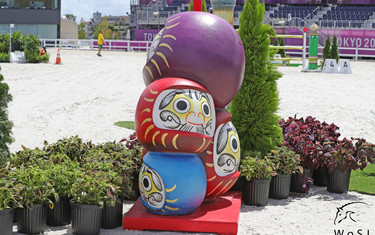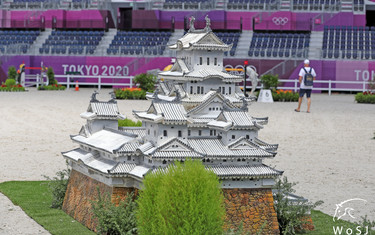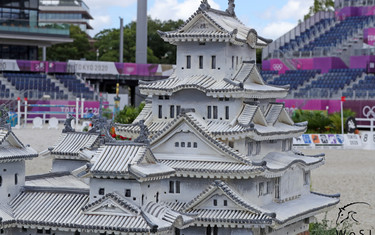The fences that have been presented for Tuesday’s Olympic individual qualifier at the Equestrian Park in Baji Koen, Tokyo, are stunning.
Mihai Simion and Flavian Paval – pictured above – have designed and built the material for the fences, and in this photo special we will take you around Tuesday's course where you can see how the two have taken inspiration from Japan’s cultural heritage and also used event symbolism in their design.
The first jump is the Rio 2016 fence, a nod to the last Olympic Games, so lets walk straight to no. 2 in the course.
The Olympic courses are built by Santiago Varela. The technical delegate next to Varela is Louis Konickx. Tuesday's course for the individual qualifier is set at 1.65m, with 14 fences and 17 efforts. Click here for the detailed course plan.
All photos © Jenny Abrahamsson for World of Showjumping. No reproduction of these images is permitted.
Fence no. 2 is a 1.55m vertical called Tokyo Skyline.
Gold Repaired Broken Pottery is the name of the 1.52m high and 1.60m wide oxer set as no. 3.
Behind these cherry blossoms, is the triple combination at 4a, b & c made of the Tanabata Festival (also known as the Star Festival) fences – which comes on a straight line after no. 3.
No. 5 is the Tokyo 2020 fence built as a triple bar, with a back height of 1.60m and spread of 2m.
Then there is a straight line to the 1.60m Gold Fish fence with a water tray underneath, as no. 6.
The Crane jump at the height of 1.62m comes out of the turn as no. 7. The Japanese Crane is known as a symbol of luck, longevity and fidelity.
The open water is placed in the middle of the arena, today with the equestrian pictograms of the Olympics as fencing in front.
The beautiful Kimono oxer follows as no. 9 – and it is 1.52 high and 1.60m wide.
After the Kimono, the Sumo Tower and the Wrestler wait – as an airy 1.62m upright on no. 10.
The jump at no. 11 is called the Senbazuru (Origami) fence, and symbols the Japanese tradition of folding square-shaped paper to make various shapes – known as Origami.
The Nikko Mausoleum as the 1.61m high wall at no. 12 leads to....
... the incredible combination at 13a & b called Hairpin Geisha, or Japanese Hairpins and Bow.
The last fence at no. 14, an oxer with a height of 1.53m and a spread of 1.60m, is called Musical Instruments, and is designed as the Japanese Taiko drums.
Of course the fences are surrounded by fantastic flower decorations. First out is the Sakura Flower.
The traditional Japanese Daruma dolls are also part of the decorations.
The stunning Himeji Castle decoration took a month to build!



